Imagine a home where the boundaries between inside and outside blur into a seamless flow of nature and nurture. Whether you’re a novice decorator or a seasoned design enthusiast, embracing the concept of indoor-outdoor living can transform your space into a harmonious retreat. This design approach isn’t merely about aesthetics; it’s about creating a lifestyle that celebrates the joy of open spaces and the serenity of nature. By integrating elements of the outside world into your interiors, you can cultivate an environment that feels both expansive and intimate.
For those just beginning their decorating journey, indoor-outdoor living offers a treasure trove of possibilities. You will learn how to blend textures, colors, and materials to create a cohesive look that bridges your indoor and outdoor spaces. Experienced decorators will find inspiration in the innovative ways to maximize natural light and incorporate outdoor elements into sophisticated design schemes. This article will guide you through practical tips and creative ideas, helping you to craft a space that not only looks beautiful but also enhances your well-being.
In the pages that follow, we’ll explore the fundamentals of indoor-outdoor design, from choosing the right furniture to selecting plants that thrive in transitional spaces. Discover how to utilize architectural features such as sliding glass doors and pergolas to enhance the fluidity between your indoor and outdoor areas. Together, we’ll delve into the art of balance, ensuring that your home becomes a sanctuary that reflects both elegance and ease. Whether you’re working with a small balcony or a sprawling garden, this guide is your key to unlocking the full potential of your living space.
Designing Seamless Indoor-Outdoor Spaces
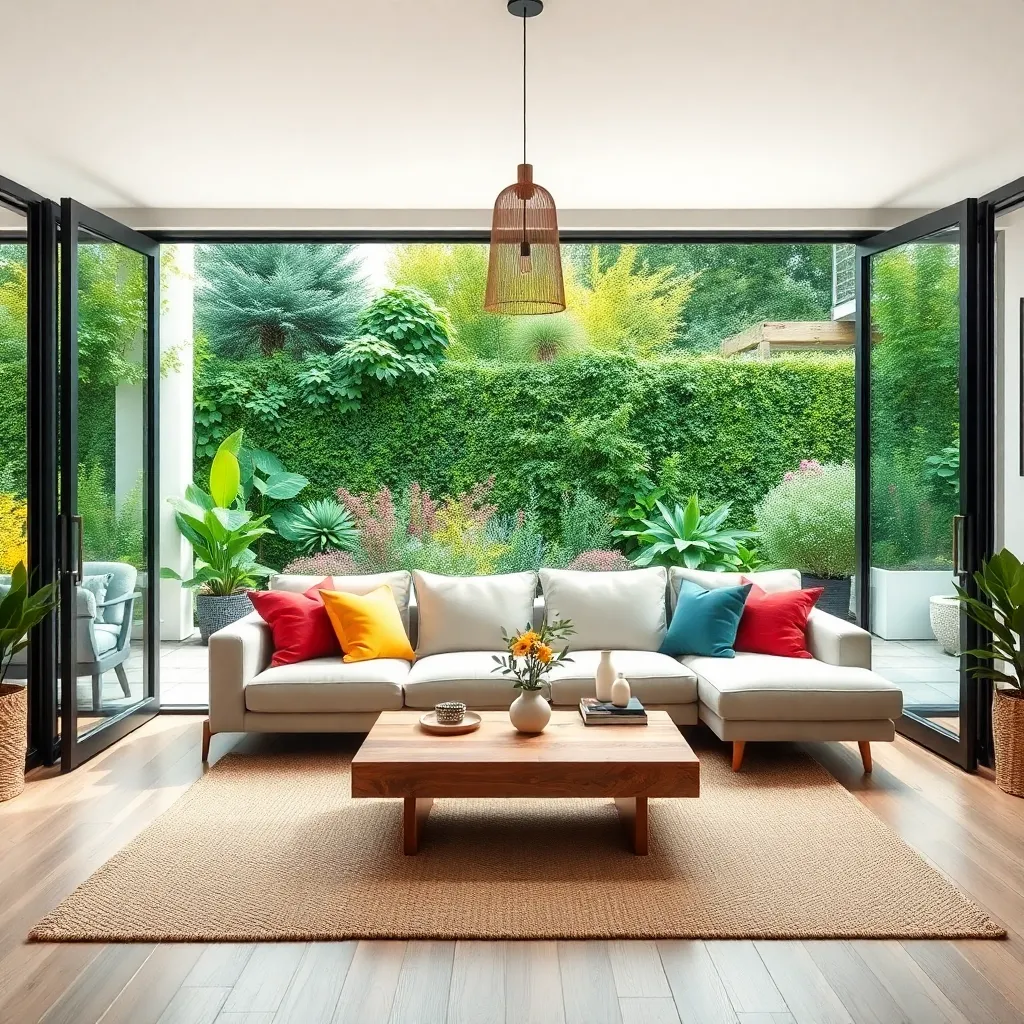
To create a seamless indoor-outdoor space, start by blurring the boundaries between the two areas. Consider using large glass doors or sliding panels that open fully to connect your interior with the exterior, allowing for an uninterrupted flow.
Choosing consistent flooring materials can significantly enhance this connection. Opt for weather-resistant options like porcelain tiles or composite decking that can extend from your indoor space to the patio.
Another way to bridge the gap is through cohesive color schemes. Use a neutral color palette for both spaces, incorporating natural hues such as sand, stone, and green, to create a harmonious transition.
Furniture selection plays a crucial role in designing these spaces. Consider using versatile pieces like modular sofas or outdoor-friendly fabrics that can withstand the elements while maintaining comfort and style indoors.
For advanced decorators, integrating similar decorative elements in both areas can enhance the seamless feel. Use matching planters or decorative lanterns to tie the spaces together visually and functionally.
Lighting can significantly impact how these spaces interact. Incorporate layered lighting such as string lights, floor lamps, and wall sconces to create a warm and inviting ambiance that extends across both areas.
Choosing Durable Outdoor Materials
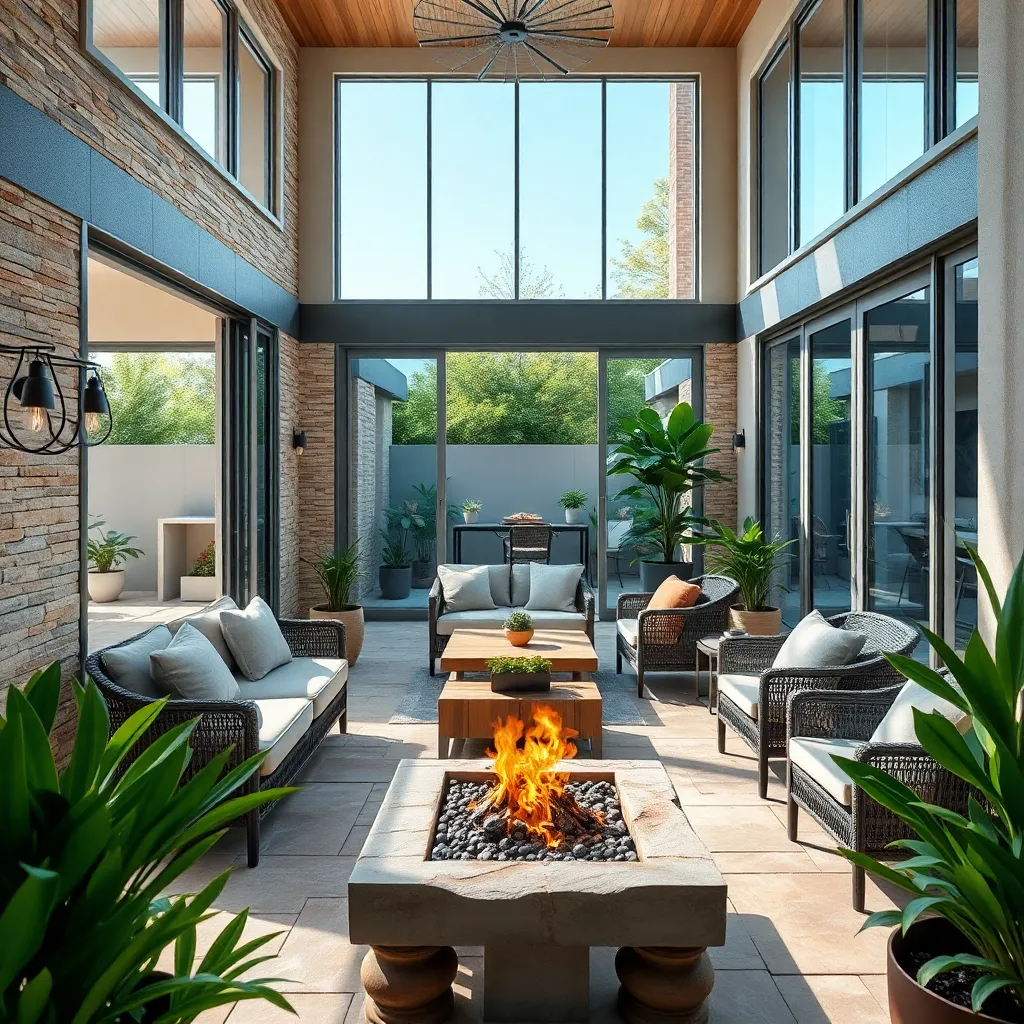
Choosing the right materials for your outdoor space is essential for creating an inviting and long-lasting environment. Opt for weather-resistant materials like teak, eucalyptus, or powder-coated aluminum to ensure your furniture withstands the elements.
Consider incorporating durable fabrics such as solution-dyed acrylic for cushions and upholstery. These materials not only offer exceptional resistance to fading and mildew but also come in a wide range of colors and patterns to suit any style.
For flooring, explore options like porcelain tiles or composite decking, both known for their durability and low maintenance. These materials mimic the look of natural stone or wood without the upkeep, making them perfect for high-traffic areas.
To add a touch of warmth and texture, integrate natural elements such as stone, rattan, or bamboo. These materials can be combined with metal or glass accents to create a balanced and cohesive look while maintaining durability.
Incorporating Natural Elements Inside
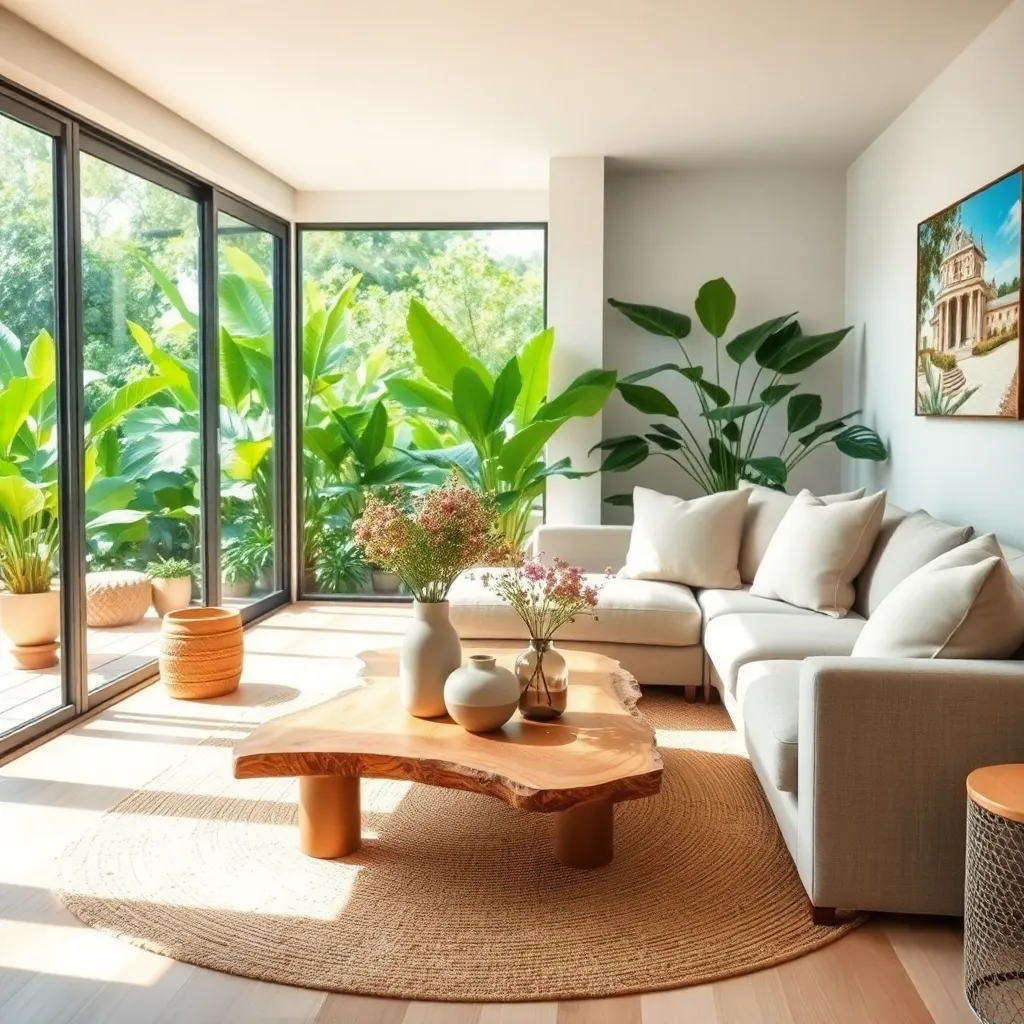
Integrating natural elements into your home can create a seamless transition between indoor and outdoor living. Start by introducing organic materials such as wood, stone, and bamboo in your furniture choices, which can add texture and warmth to any space.
To enhance a natural aesthetic, consider placing potted plants strategically throughout your home. For beginners, easy-to-maintain options like succulents or ferns can be placed on shelves or windowsills to add greenery without overwhelming your space.
For a more advanced approach, incorporate a living wall or vertical garden in areas with ample natural light. This not only acts as a stunning focal point but also improves air quality and brings a dynamic element to your space.
Color schemes inspired by nature can further enhance the indoor-outdoor connection. Opt for a palette of earthy tones like soft greens, browns, and blues that mimic the hues found in nature, creating a calming and cohesive environment.
Texture plays a critical role in bringing the outside in, so consider using natural fiber textiles such as linen or cotton for upholstery and window treatments. Layering these materials with different patterns and tones can create depth and interest while maintaining a grounded, natural feel.
Maximizing Views with Glass Walls
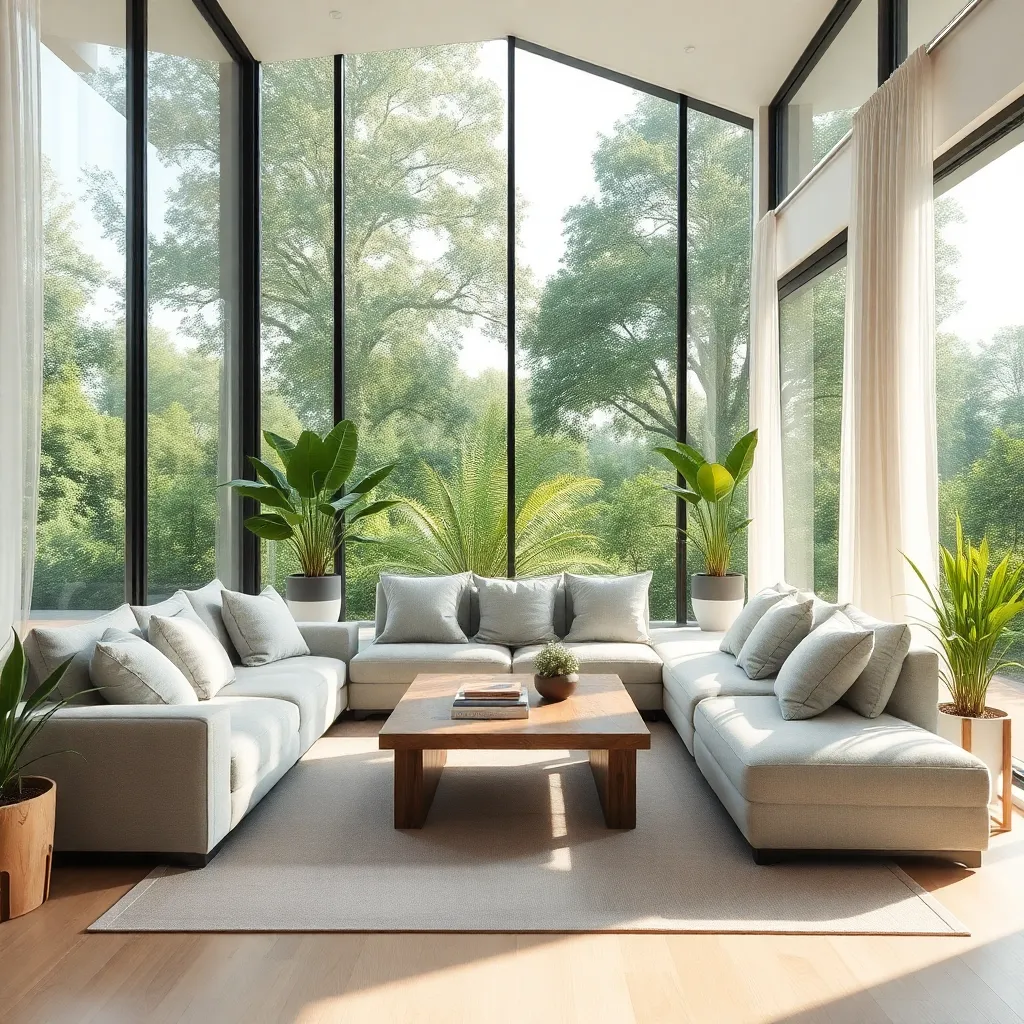
Glass walls are an excellent tool for maximizing indoor-outdoor living by creating a seamless connection between your home’s interior and the surrounding landscape. When installing glass walls, ensure they are strategically placed to capture the most striking views, such as gardens, ocean vistas, or cityscapes.
Choosing the right type of glass is crucial for both aesthetics and functionality. Opt for low-emissivity glass to improve energy efficiency while maintaining clear, unobstructed views.
Furniture placement should complement the openness glass walls provide. Arrange seating to face outward, allowing occupants to enjoy the views while maintaining a cozy, inviting interior space.
Consider using light, neutral color schemes to enhance the natural light that glass walls allow into the home. Soft whites, beiges, and pastels can make spaces feel larger and more connected to the outdoors.
For those looking to add more sophistication, incorporating motorized blinds or curtains can offer both privacy and shade when needed. This advanced tip ensures you can control light and privacy without interrupting the clean lines and openness of the glass.
Creating Flow with Outdoor Furniture
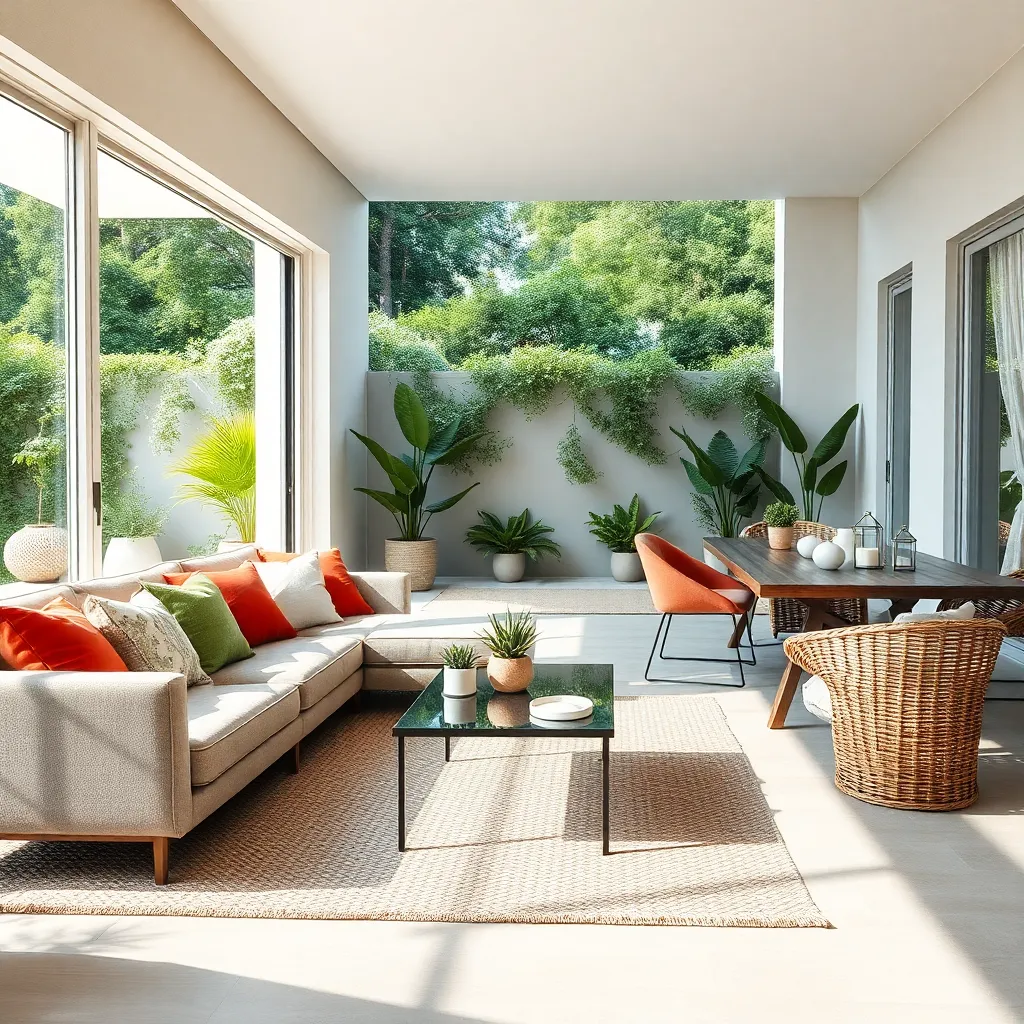
Blurring the lines between indoor and outdoor spaces can be elegantly achieved with the strategic use of outdoor furniture. Opt for pieces that are versatile, such as a sleek teak table or weather-resistant wicker chairs, which can seamlessly transition from patio to living room.
When selecting outdoor furniture, consider materials that are both durable and stylish. Teak, aluminum, and synthetic rattan are excellent options, as they withstand weather changes while maintaining a polished appearance.
Placement is key to creating a harmonious flow between your indoor and outdoor areas. Arrange furniture to extend your home’s interior lines, such as aligning a dining table set outside with the indoor dining area for a cohesive look.
For a cohesive color scheme, draw inspiration from nature’s palette. Use earthy tones like sage green and terracotta, or coastal hues such as soft blues and sandy beiges, which naturally connect your spaces.
Advanced decorators might experiment with layering textures to enhance the visual connection between areas. Mix materials like metal, wood, and textiles to create depth and interest, ensuring that transitions between spaces feel natural and inviting.
Conclusion: Growing Success with These Plants
In exploring the enriching concept of indoor-outdoor living for relationships, we’ve uncovered five key ideas: the importance of shared spaces that nurture connection, the role of nature in reducing stress and fostering intimacy, the power of creating personal sanctuaries for individual growth, the benefits of collaborative projects to strengthen teamwork, and the need for balance between togetherness and personal space. Each of these elements serves as a foundation for deeper connection and harmony in your relationship.
As your actionable next step, consider initiating a small project with your partner, such as designing a cozy outdoor spot together. This shared endeavor not only nurtures teamwork but also creates a dedicated space for future moments of connection.
Don’t forget to bookmark or save this article—it’s your go-to guide for revisiting these valuable insights. By keeping it handy, you can continue to integrate these concepts into your relationship journey.
Remember, every step you take towards enhancing your living environment is a step towards a more fulfilling and successful relationship. Embrace these ideas with an open heart, and watch as your relationship blossoms into something truly extraordinary.
